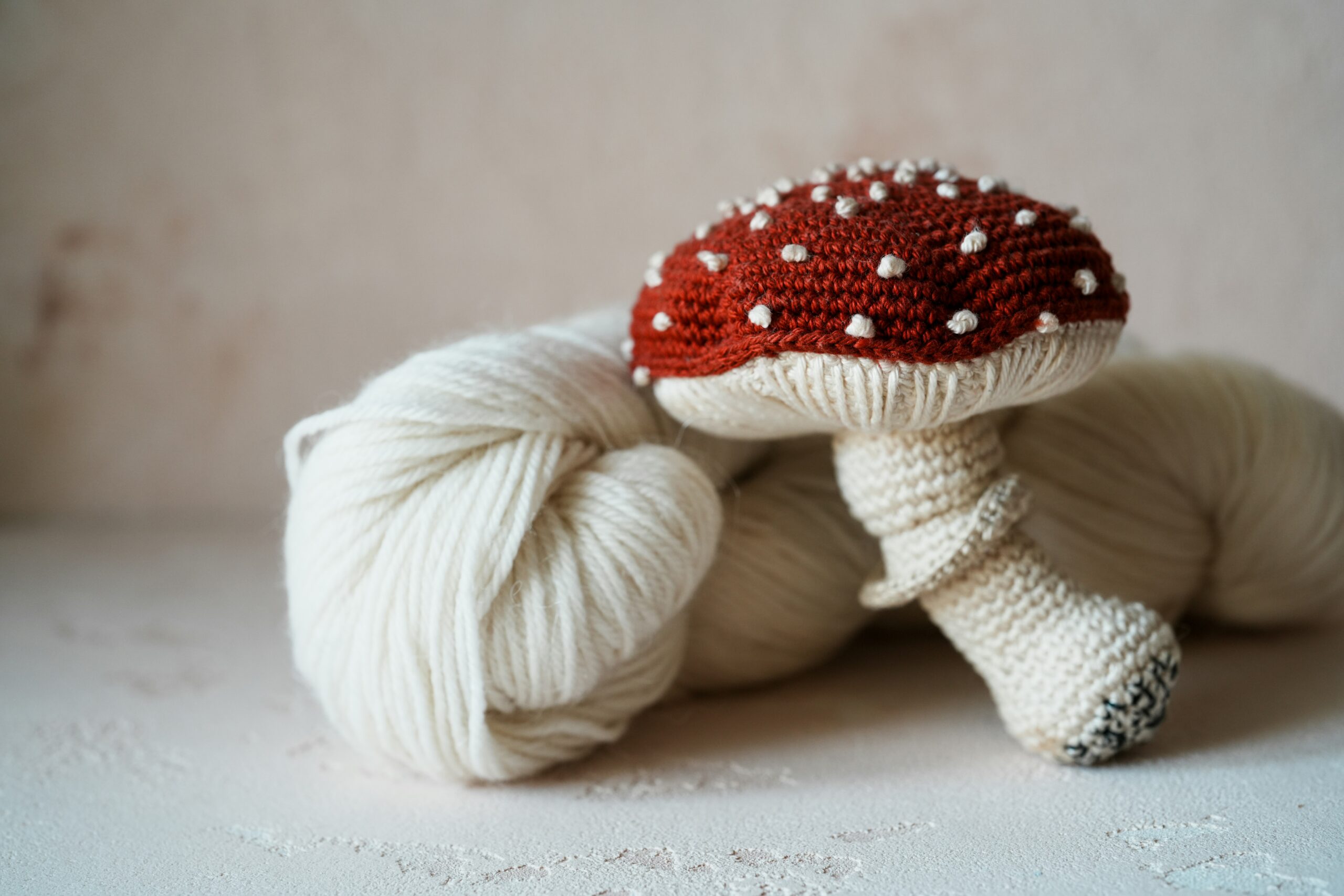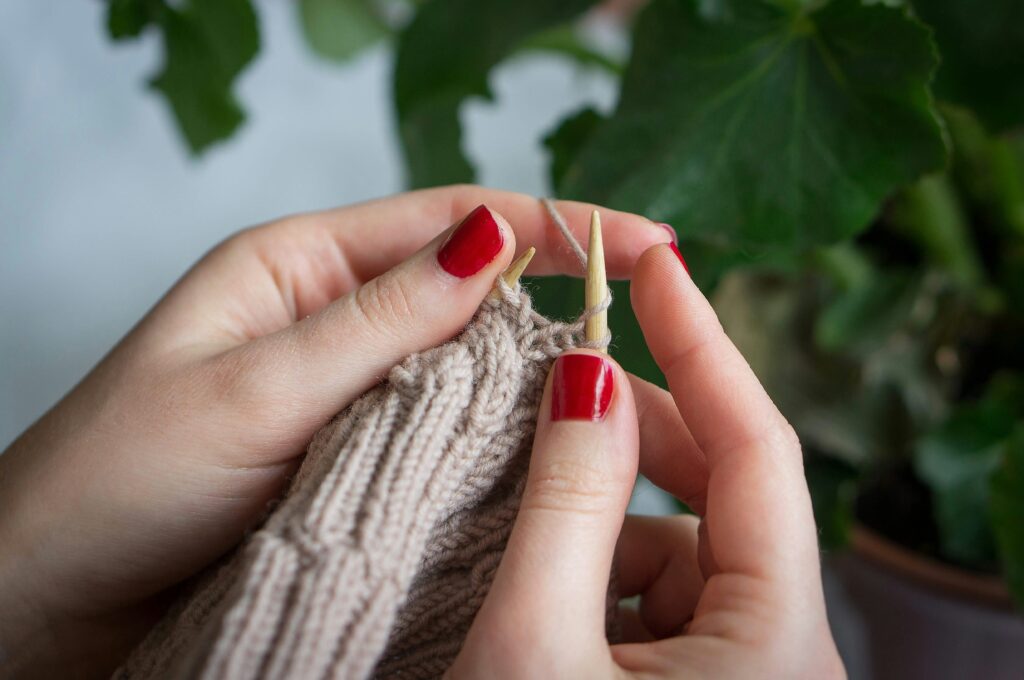
How to start a knitting or crocheting habit
Knitting and crocheting are more than just crafts – they are hobbies that can bring a sense of calm, accomplishment, and creativity into your life. Whether you’re looking for a way to unwind after a busy day, express your artistic side, or make handmade gifts for loved ones, knitting or crocheting can offer all of this and more. Starting a new hobby can feel a bit overwhelming, especially when you’re not sure where to begin, but with a little guidance and the right mindset, you can quickly get hooked (pun intended!) on these relaxing and rewarding activities.
In this article, we’ll explore how to start a knitting or crocheting habit, from setting realistic goals to choosing the right tools and materials, all while keeping motivation high:
- The joy of starting a knitting or crocheting habit
- Setting realistic goals for your first projects
- Choosing the right tools and materials
- Finding time and motivation to keep going
- Stick with your new habit until it becomes part of your routine
The joy of starting a knitting or crocheting habit
Knitting and crocheting are both fantastic hobbies that come with a whole host of benefits. Not only do they provide an outlet for creativity, but they can also be incredibly relaxing. The repetitive motions involved in knitting and crocheting have a meditative quality that helps calm the mind and reduce stress. Whether you’re making a cosy scarf or a colourful blanket, the act of crafting something with your hands is incredibly satisfying.
“Knitting is very conducive to thought. It is nice to knit a while, put down the needles, write a while, then take up the sock again.” – Stephanie Pearl-McPhee
But it’s not just about making beautiful things – knitting and crocheting are also great for mental health. Studies have shown that these crafts can help improve focus, increase feelings of accomplishment, and even provide a sense of connection to a wider community. As you create your projects, you’ll also be able to reflect on the effort and time that goes into each stitch, which can bring a sense of mindfulness and presence to your life.

Now, if you’re new to knitting or crocheting, don’t worry! Everyone starts somewhere, and the beauty of these hobbies is that they’re easy to pick up with a little practice. Whether you want to crochet a soft blanket or knit a pair of mittens, getting started is simple and enjoyable. Here’s how to begin.
Setting realistic goals for your first projects
When you first dive into knitting or crocheting, it’s essential to start small. While it can be tempting to take on ambitious projects like intricate lace shawls or complex jumpers, it’s best to keep things simple in the beginning. Starting with easy, manageable projects will help you learn the basic techniques without feeling overwhelmed.
A great way to begin is by making a scarf or a dishcloth. These projects are not only practical but also perfect for beginners. A scarf, for instance, allows you to practice knitting or crocheting in straight rows, and it doesn’t require any shaping or complicated techniques. Similarly, a dishcloth is an excellent choice for learning basic stitches and perfecting your tension.
Starting with small items, like these, will also give you a sense of accomplishment once they’re finished. The last thing you want is to become discouraged by a project that’s too difficult or time-consuming. So, aim to create something simple, and as you become more comfortable with the techniques, you can slowly start adding more complexity to your projects.
Choosing the right tools and materials
One of the best things about knitting and crocheting is that you don’t need much to get started – just a few essential tools and some yarn. Here’s what you’ll need to get going:
For knitting:
- Knitting needles: As a beginner, start with a pair of straight needles in a medium size, such as 4mm to 6mm. Bamboo needles are often recommended for beginners because they’re light and help grip the yarn better, reducing the chance of stitches slipping off.
- Yarn: Choose a medium-weight yarn (also known as worsted weight) in a soft, easy-to-handle material like acrylic or cotton. Avoid using very fine or very bulky yarn for your first project, as it can be harder to work with.
- Scissors and a tapestry needle: These will come in handy for cutting yarn and weaving in ends once you finish your project.
For crocheting:
- Crochet hook: Start with a basic, medium-sized hook, such as a 5mm or 6mm hook. Aluminum hooks are a good choice for beginners because they’re durable and smooth.
- Yarn: Similar to knitting, choose a medium-weight yarn that’s soft and easy to work with. Acrylic yarn is a great choice for beginners because it’s affordable and comes in a variety of colours.
- Scissors and tapestry needle: Like knitting, you’ll need these tools to finish off your projects neatly.
- When picking out yarn, consider colours and textures that appeal to you. The more you enjoy the materials, the more fun you’ll have working with them. And don’t worry if you don’t get everything perfect in the beginning – part of the process is experimenting and finding what works best for you.
Finding time and motivation to keep going
One of the biggest challenges for beginners is staying motivated and making time for knitting or crocheting. The key is to integrate these activities into your routine in a way that feels natural and enjoyable. Start by setting aside a few minutes each day to practice – even if it’s just while watching TV or during your lunch break. You’ll be surprised how quickly you can build a habit when you make it part of your daily routine.

Another helpful tip is to keep your projects easily accessible. Keep your yarn, needles, and hooks in a small bag or box, so it’s easy to pick up whenever you have a free moment. Having everything ready to go means you’re more likely to start working on your project rather than letting it sit unused.
Joining a community of fellow crafters can also help keep you motivated. There are plenty of online groups, forums, and social media pages dedicated to knitting and crocheting, where you can share your progress, ask for advice, and get inspired by others’ projects. Whether it’s a local knitting circle or a virtual crochet group, having a support system can be incredibly encouraging.
By the way here’s a lovely tutorial on the crochet 101:
Stick with your new habit until it becomes part of your routine
Starting a knitting or crocheting habit is a fun and rewarding journey. Remember, there’s no rush to create perfection. Be patient with yourself and enjoy the process. As you practice and build your skills, you’ll find that your projects become more intricate, and your confidence will grow.
Take your time with simple projects, choose the right materials, and set small, achievable goals. Don’t forget to have fun and experiment with new techniques as you progress. The beauty of knitting and crocheting lies not only in the finished products but also in the relaxation and joy that comes from the creative process.
Remember, handcrafts can be a valuable addition to your daily life:
- Knitting and crocheting are tactile hobbies that can enrich your life with their calming and stress reducing effects
- Making beautiful things can give you a sense of accomplishment and can also serve as an expression of your personality and individuality
- Make sure to find time throughout the day, e.g., when commuting to and from work, during your lunch break or right before bed
- As with every routine it’s imperative to stick to it: Don’t pressure yourself too much, but if you can knit or crochet every day or weekend to establish a routine
- Remember that it takes between 21 and 66 days for a habit to become routine
- Don’t be discouraged if your first projects come out a little wonky, that adds to their charm!
So grab your needles or hook, find some yarn you love, and start crafting your next project. Who knows – you might just discover a lifelong hobby that brings you peace, creativity, and a sense of accomplishment. Happy crafting!


